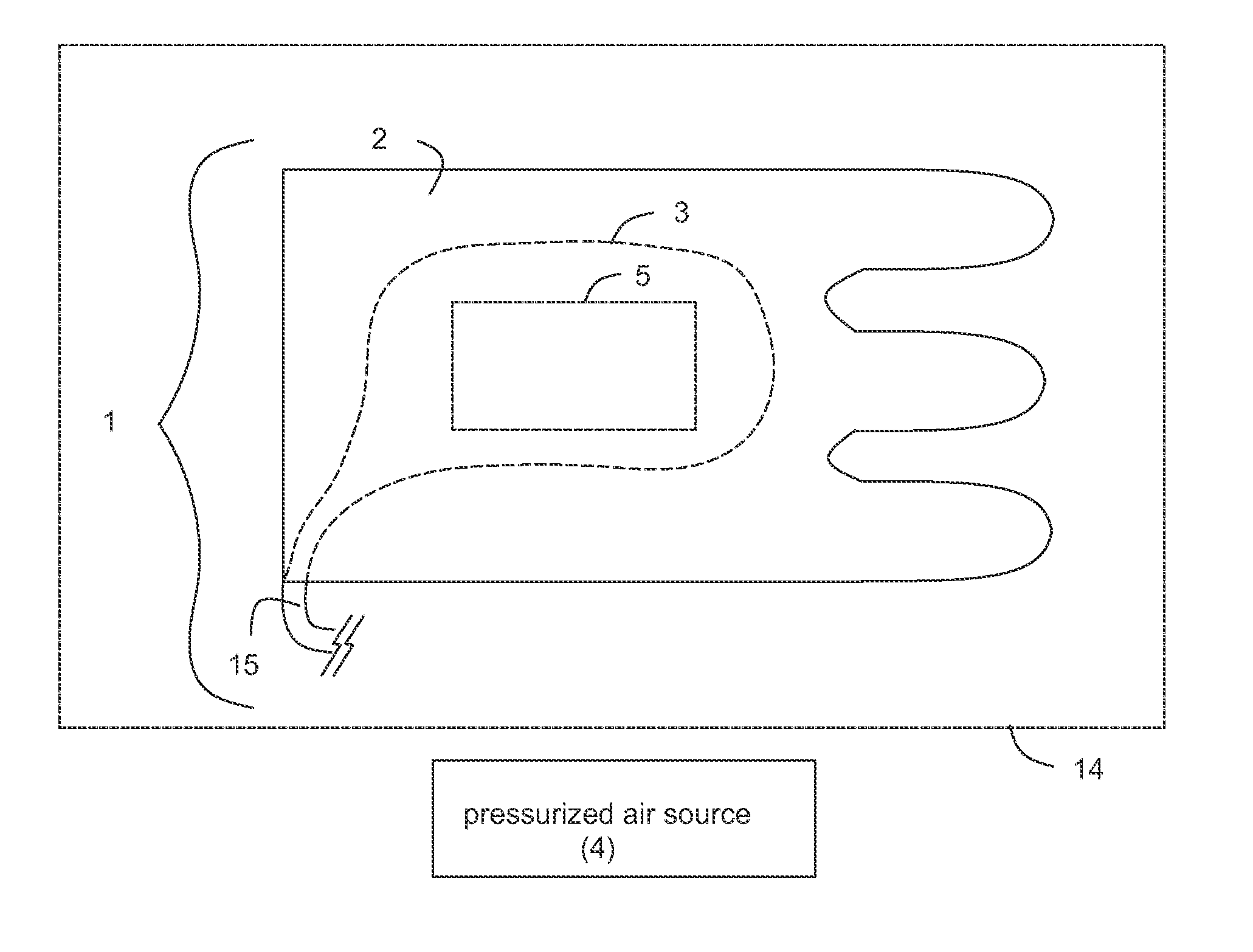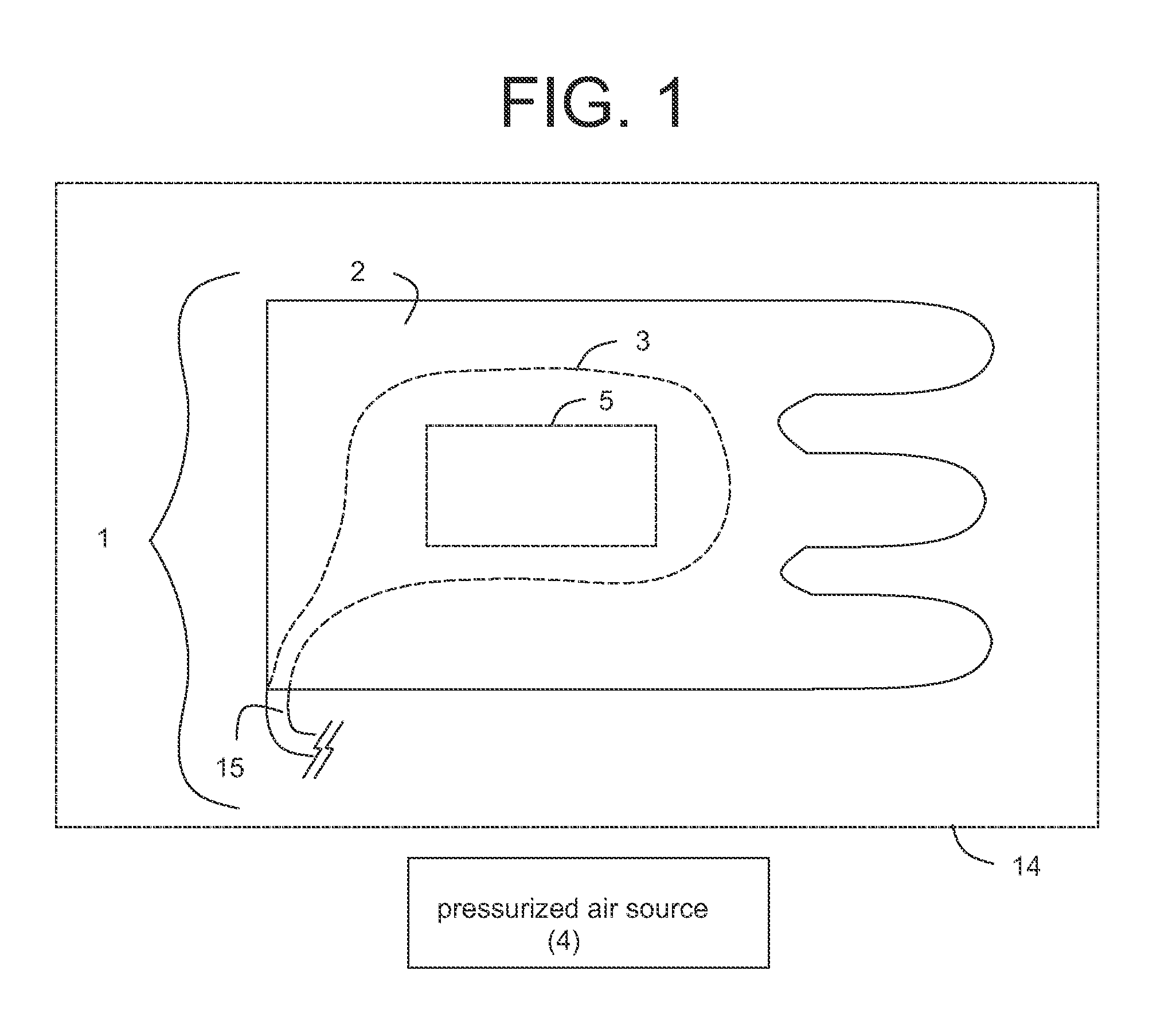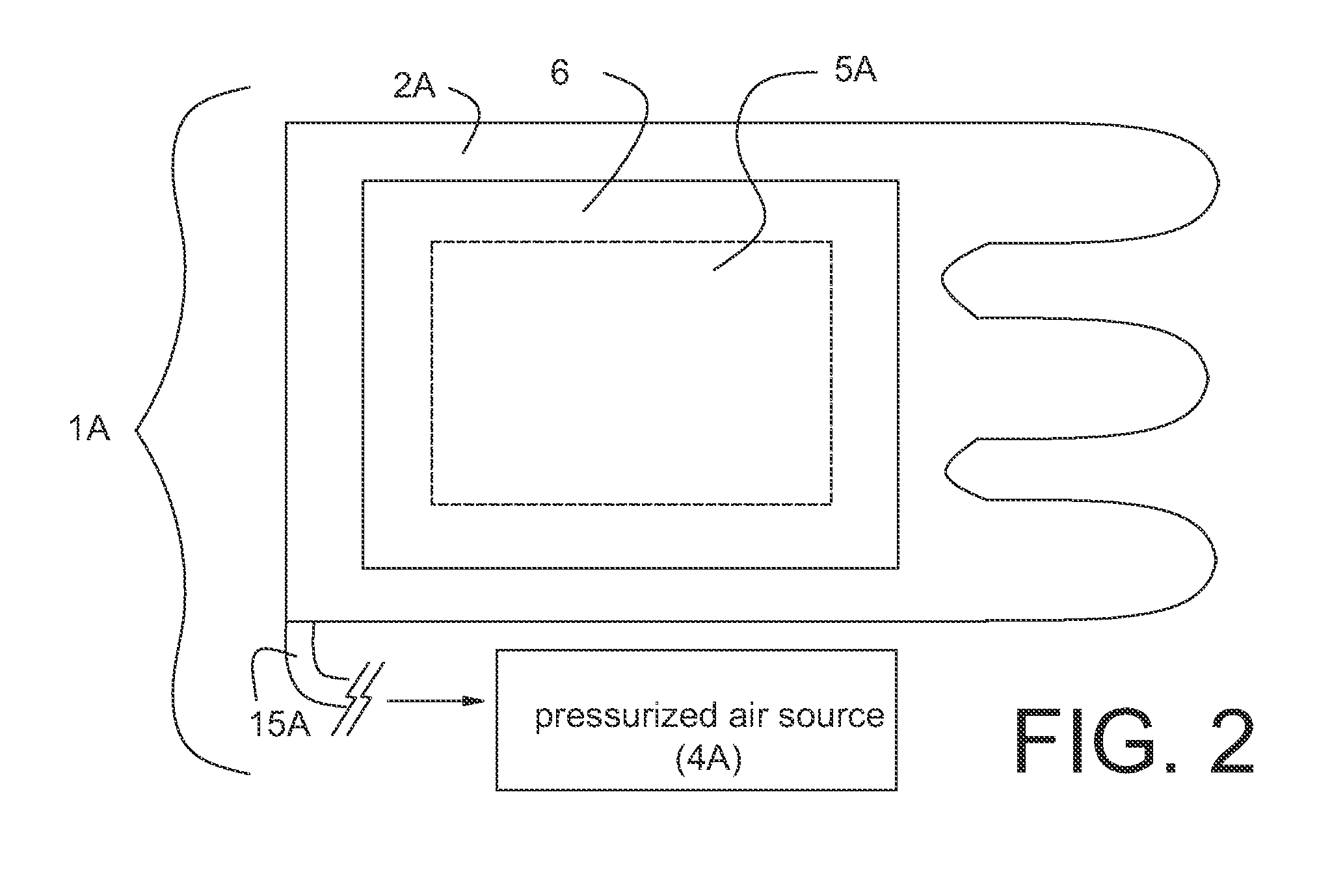Heated Compression Therapy System and Method
a compression therapy and heating technology, applied in the field of heated compression therapy system and method, can solve the problems of body temperature drop, loss of ability to regulate temperature of anesthetized patients undergoing surgery, severe complications, etc., to reduce the chance of shock to patients, eliminate the risk of electrical shock and connection wires, and cost
- Summary
- Abstract
- Description
- Claims
- Application Information
AI Technical Summary
Benefits of technology
Problems solved by technology
Method used
Image
Examples
Embodiment Construction
[0019]In various embodiments, a calf garment assembly 1, 1A comprises, calf garment 2, 2A having internal chamber 3, 3A being substantially airtight and being in fluid communication with pressurized air source 4, 4A, and heating element 5, 5A being restrained proximate calf garment 2, 2A, respectively.
[0020]Referring now to FIG. 1, heating element 5 can be either securedley attached within internal chamber 3, or alternatively can be loosely inserted within. If the latter, the positioning of heating element 5 can vary relative to a patient's leg while in use. Fixing the heating pad within internal chamber 3 allows a more predictable result.
[0021]In operation, calf garment assembly 1 is sealed in airtight package 14, to ensure heating element 5 (air-activated heat pack) is not activated by premature exposure to air. Calf garment assembly 1 is removed from airtight package 14 just prior to use. Port 15 of internal chamber 3 of calf garment 2 is connected to pressurized air source 4. Ca...
PUM
 Login to View More
Login to View More Abstract
Description
Claims
Application Information
 Login to View More
Login to View More - R&D
- Intellectual Property
- Life Sciences
- Materials
- Tech Scout
- Unparalleled Data Quality
- Higher Quality Content
- 60% Fewer Hallucinations
Browse by: Latest US Patents, China's latest patents, Technical Efficacy Thesaurus, Application Domain, Technology Topic, Popular Technical Reports.
© 2025 PatSnap. All rights reserved.Legal|Privacy policy|Modern Slavery Act Transparency Statement|Sitemap|About US| Contact US: help@patsnap.com



